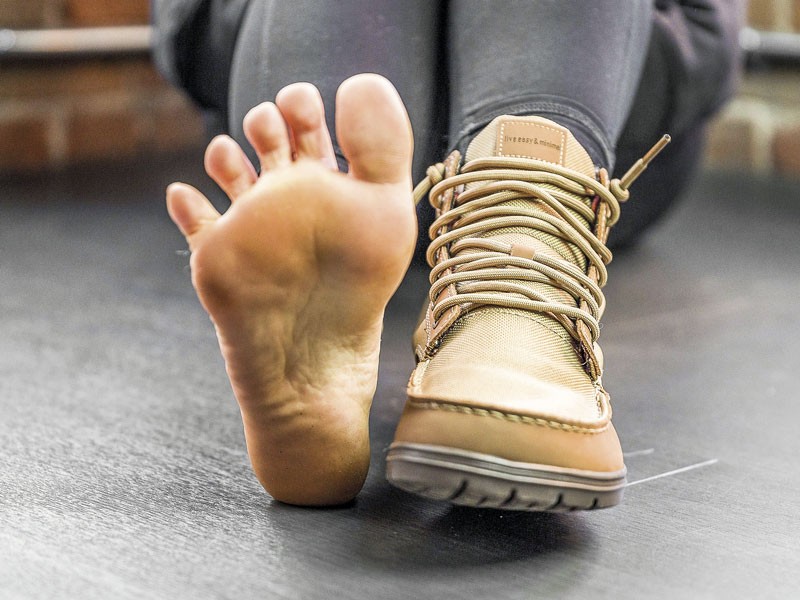


The growing demand for greater comfort in footwear, with a focus on user health, has driven the development of products that allow a better fit and promote a more natural walking pattern. This gave rise to the BAREFOOT concept, literally “bare foot,” which aims to simulate the sensation of walking without shoes.
Its primary goal is to offer the least possible interference between the foot and the ground, enabling the muscles, tendons, and ligaments to function naturally, as they would barefoot. This can bring benefits for foot health and overall body posture.
Beyond aesthetics, it involves a structural change in footwear, requiring different volumes and last shapes.
The BAREFOOT concept originated in the sports world in the United States around the 1970s, when some runners chose to compete in marathons wearing this type of shoe.
Unlike thick, rigid soles, barefoot shoes feature thin, highly flexible soles -or cupsoles- that allow the foot to feel the ground and move naturally. This enhances proprioception (the body’s ability to perceive its position and movement) and strengthens the foot’s muscles. These soles do not have stability-control devices; they lack components designed to correct gait, allowing the foot itself to act as a natural shock absorber and spring.
This means there is no height difference between the heel and the forefoot (completely flat shoe). Both are at the same level, promoting a more natural, balanced posture, aligning the spine, and reducing joint stress. Traditional footwear, with an elevated heel, alters this alignment. Wearing heels often leads to back pain and skeletal discomfort.
The barefoot shoe’s toe cap is spacious, allowing the toes to spread and move freely without compression. This is essential for proper weight distribution, stability, and prevention of deformities such as bunions or hammer toes, common in traditional narrow-toed shoes.
Unlike conventional shoes that often include arch support, barefoot shoes omit it. This forces the foot muscles to work and strengthen naturally rather than relying on external support, which can weaken them over time.
These reduce load on the feet and enable natural movement, preventing fatigue and muscle strain linked to conventional footwear.
Often made with components and constructions that allow ventilation, contributing to comfort and foot health.


Allows natural movement, activating and strengthening intrinsic muscles of the foot and leg that remain inactive in traditional shoes.
Zero drop and enhanced proprioception encourage a natural stride and better body alignment, reducing back, knee, and hip pain.
A softer, more controlled foot strike reduces joint impact and common injuries such as sprains, plantar fasciitis, or tendinitis.
Thin soles enhance ground contact, stimulating foot nerves and improving environmental awareness.
A wide toe cap helps prevent issues caused by compression, like bunions or overlapping toes.
Freer, more natural toe and muscle movement stimulates circulation.
Transitioning to barefoot footwear should be gradual, allowing the foot muscles to strengthen and adapt.

Aesthetically, the style is minimalist, with shapes imitating foot anatomy, adapting to new volumes and natural functionality. This avoids compression and deformation that can cause pain and long-term issues.
Barefoot footwear follows eco-design principles, using minimal and environmentally low-impact materials, focusing on sustainable materials and responsible manufacturing practices.
Closed or open uppers must take into account many of these aspects: the characteristics and composition of the materials, the arrangement of the upper pieces, stitching, and other accessories.
Both the toe caps and the heel counters are designed to follow the philosophy of minimal intervention and maximum respect for the natural shape of the foot. This contrasts sharply with traditional footwear, which often incorporates rigid and restrictive elements in these areas.
The toe caps are wide and anatomical, following the natural shape of the foot and allowing the toes to spread and extend freely. This is the most important and distinctive feature, unlike some narrow and pointed toe caps in conventional footwear.
The materials used for toe caps must be soft and flexible, providing light protection to the forefoot.
Heel counters, which form the rear structure of the shoe’s heel area, must not be rigid; they should be soft and moldable, allowing the heel to move with complete freedom. A rigid heel counter restricts ankle movement, which can affect the natural walking pattern and the alignment of the leg and spine. The absence of a rigid heel counter allows the ankle to flex and move as it would when barefoot.
Without external support to “hold” the heel in place, the muscles and ligaments of the foot and ankle must work harder to stabilize the joint, contributing to long-term strengthening.
Unlike many sports or “orthopedic” shoes, barefoot footwear does not incorporate stability-control devices or “wedges” in the heel counter. The aim is for the foot to stabilize itself, developing its own musculature.
In summary, the toe caps and heel counters of closed barefoot footwear are designed to be wide, soft, flexible, and non-restrictive, allowing the foot to move and function as naturally as possible, as if barefoot but with the necessary protection.



Due to the category’s growth in Europe, the German Footwear Industry Association announced the creation of the first fair dedicated to this type of product, held in Offenbach, near Frankfurt, from July 31 to August 3.
The association’s deputy director, Torben Schütz, stated: “Not only recently, but for several seasons we have observed this trend. While initially this footwear only appealed to a specific target group, demand has expanded to other buyer segments. Interest in barefoot shoes is increasing dramatically across all genders and ages.”
